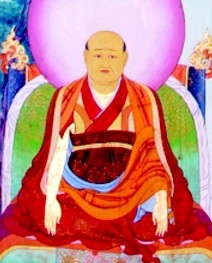Conclusion
From Words of My Perfect Teacher:
These instructions contain twelve principal points, of which the first six concern the ordinary, outer preliminaries:
1. To use this human life for what is truly important by reflecting on how difficult it is to find the freedoms and advantages.
2. To goad oneself to diligence by reflecting on life’s impermanence.
3. To develop the determination to be free and an attitude of compassion by recognizing that the nature of the whole of samsara is suffering.
4. To renounce evil and adopt good in whatever one does through a detailed understanding of the effects of actions.
5. To be more and more eager for the fruit through remembering the benefits of liberation.
6. By following an authentic spiritual friend, to train oneself to emulate his realization and his actions.
The next five concern the extraordinary, inner preliminaries:
1. To lay the foundation for liberation by taking refuge in the Three Jewels.
2. To establish a framework for the innumerable activities of a Bodhisattva by arousing the sublime bodhicitta.
3. To confess harmful actions and downfalls, the root of all evil, through the four strengths, using the meditation and recitation on Vajrasattva.
4. To accumulate merit and wisdom, the source of all spiritual progress, by offering the pure lands of the three kayas in the form of a mandala.
5. To arouse within yourself the supreme wisdom of realization by praying to the teacher, the source of every blessing.
Finally, in case death should arrive suddenly before the path has been completed, a link to the pure lands is created through the transference of consciousness, bringing Buddhahood without meditation.
These preliminary practices may also be presented as follows. Through the four reflections that turn the mind from samsara and through an understanding of the benefits of liberation, you awaken a sincere determination to be free, which opens up access to the whole of the path. Through following a spiritual friend, the source of all good qualities, you create the conditions favourable to the path. Through taking refuge as the foundation, arousing bodhicitta and training in the practice of the six transcendent perfections, you are led along the authentic path of the perfect and omniscient Buddhas.
There are other instructions that are known for their explanations of the three kinds of perception,* the three levels of beings’ ability, the Mahamudra according to the tradition of the sutras and so forth, but all the essential points of the paths found in them are united here in this present work.
(*The preliminaries for the “Path and Fruit” practice of the Sakya tradition are based on the three kinds of perception: impure perception, mixed perception experienced by yogis through practice, and pure perception.)
However, purification and accumulation using the two supreme methods, namely Vajrasattva practice and the offering of the mandala; Guru Yoga, the secret path of profound blessings; and the instructions on the transference that brings Buddhahood without meditation-all these are peerless teachings particular to this way of explaining the practice.
After these practices, one enters the extraordinary main path of the vajra core-teaching of the Heart-Essence, for which there are special preliminary practices leading to the three kayas, to mind, and to awareness. Then, once one has been introduced to the absolute through the empowerment of the creativity of awareness, there are naked instructions based on the evolution of one’s own experience.*
(*This paragraph refers to the practices specific to the Great Perfection.)
In writing down these instructions I have not been guided primarily b aesthetic or literary considerations. My main aim has simply been to faithfully record the oral instructions of my revered teacher in a way that is easy to understand and useful for the mind. I have done my best not to spoil them by mixing in my own words or ideas.
On separate occasions, my teacher also used to give numerous special instructions for exposing hidden faults, and I have added whatever I have been able to remember of these in the most appropriate places. Do not take them as a window through which to observe others’ faults, but rather as a mirror for examining your own. Look carefully within yourself to see whether or not you have those hidden faults. If you do, recognize them and banish them. Correct your mind and set it at ease on the right path. As Atisa said:
The best spiritual friend is one who attacks your hidden faults.
The best instructions are the ones that hit those faults.
The best friends are mindfulness and vigilance.
The best incentives are enemies, obstacles and the sufferings of illness.
The best method is not to fabricate anything.
It is extremely important to bring the instructions to bear on your hidden faults, to use the Dharma to correct your mind, to maintain mindfulness and vigilance all the time, to take upon yourself full responsibility for whatever happens, never to let even a single negative thought run loose, and to use the teachings to tame your mind. If you can do all that, you will be doing yourself a favour. The Dharma will be of benefit to your mind, and following a teacher will begin to have real meaning. Atisa also says:
The best way you can help others is to lead them to take up Dharma.
The best way they can receive that help is to turn their minds to Dharma.
In short, you now have the freedoms and advantages of human existence. You have met an authentic teacher and received the profound instructions. The opportunity to attain Buddhahood by putting the nine vehicles of the teachings into practice is now yours. It is now that you can establish a strategy for all your future lives-or now that you can abandon yourself to chance. It is now that you can turn your mind to good-or now that you can abandon it to evil. This very moment is the watershed between the right and wrong direction of your entire existence. This opportunity is like finding something to eat when you have only had one meal in a hundred throughout your whole life. So make use of the Dharma to free yourself while you still can, taking death as your spur at all times. Cut short your plans for this life, and diligently try to practise good and give up evil even at risk of your life. Follow an authentic teacher and accept whatever he tells you without hesitation. Give yourself, in body and mind, to the Three Jewels. When happiness comes, recognize it as their compassion. When suffering comes, recognize it as the result of your own past actions. Apply yourself to the practices of accumulation and purification with the perfectly pure motivation of bodhicitta. Ultimately, through immaculate devotion and samaya, unite your mind indissolubly with that of a sublime teacher in an authentic lineage. Capture the stronghold of the absolute in this very life, courageously taking on the responsibility of freeing all beings, our old mothers, from samsara’s dungeon. This includes all the most crucial instructions.
The pith instructions from the threefold lineage in a river of nectar,
The sweet ambrosia from the lips of a teacher of this true tradition,
The essential points of the practice of the nine vehicles,
Are all collected here, without error or adulteration.
These good words are like well-cooked food,
With all the chaff of fancy phrases winnowed away,
Seasoned with savoury crucial points of deepest practice
In the cooking-juice of instructions based on experience.
These good words are like a skilful farmer
Who, through the wasteland of an evil nature, rank with the three poisons,
Drives the adamantine ploughshare of the teachings, unearthing all hidden faults,
And irrigates skilfully with the water of authentic Dharma.
These good words are like an abundant harvest. In the fertile soil of determination to be free of samsdra,
The seed of bodhicitta is carefully sown
And nurtured with merit and purification, to yield the fruit of spiritual attainments.
These good words are like a kindly nanny.
Watching her charges for hidden faults and uprooting them,
She skilfully exhorts them to good a hundred times,
Ever concerned only to help them improve.
They are not just words; they have a meaning that is especially profound;
They are still warm with the breath of my peerless teacher.
Those who take them as the jewel of their heart
Have certainly taken the true, pure path.
These good teachings are the Bodhisattvas’ special skill,
A sacred text written without elegance or poetry
But using everyday language to teach the authentic path,
So that the benefits and the practice may be taken to heart.
Extensive explanatory texts full of copious detail
Do not easily fit in the cramped space of limited minds.
High discourses on philosophical views and profound doctrines
Are hard to put into practice for the weak intellects of our decadent age.
This is why this text, condensed and easy to understand,
A golden elixir to soak into minute openings in narrow minds,
A lamp to light up the gloom of those of feeble wits,
Like an imperturbable instructor, imparts the right meaning clearly on its own.
For the savant who loves verbose discourse,
For the great teacher not seeing what is in the the texts and oral tradition as applying to himself,
To have drunk the nectar of these excellent pith-instructions
Will without doubt revitalize the heart of their practice.
For the hermit who meditates without guidance as if throwing stones in the dark,
For the adept who boasts of all the practice he has done,
For the bogus siddha who has never faced up to his own limits,
This path will cure the disease in their hearts.
This text is not some confection of invented phrases,
A cleverly painted rainbow of fanciful words
By some erudite expert superficially versed in complex texts,
Having nothing to do with the words of my kind teacher.
Of this my vajra-brothers can still bear witness,
For not yet in the distant past is that good age,
A blessed time for Tibet and for the world The lifetime of that Buddha in reality, my peerless teacher.
It was that noble being’s activity that inspired me
To compile a collection of his authentic words.
This imprint of my devotion and good intention
Should merit great rejoicing by my brothers, and even by the gods.
Fortunate beings living in future times, too:
Please feel the same devotion when you read this text
As you would on meeting my enlightened teacher in person,
For I believe it faithfully conveys the essence of his words.
Whatever merit might accrue from this work
I dedicate to all beings, my mothers of the past,
That they may be sustained by a perfect spiritual friend,
Put his perfect words into practice, and see the excellent fruit.
Especially, may all those nourished on this nectar
From the lips of my peerless teacher, that perfect Buddha,
Together attain perfect Buddhahood;
May I see them setting out and guiding beings.
May the supreme regents of my most kind teacher,
Those who have drunk the nectar of his perfect words
And captivate the fortunate with the intoxicating song of his instructions,
Long keep their lotus feet firmly upon the vajra throne.*
(*A poetic expression often employed to wish long life and good health to spiritual teachers.)
Henceforth, may I in all my future lives
Be a servant to my perfect teacher and all who follow him;
Pleasing them by fulfilling whatever they might ask
May I be guided as his disciple.
Until samsara ceases, for every single being,
May I pile up my bodies, my belongings and my merit;
May I serve m old mothers steeped in their afflictions,
And then may they too all take up the perfect Buddha’s Dharma.
Meanwhile may the blessings of this precious lineage
Dawn within their hearts like the perfect rising sun.
Having devoted their lives to practice in seclusion,
May they be ever in the presence of the peerless teacher.
This general outer and inner guide to The Heart-essence of the Vast Expanse is faithful to the words of my peerless teacher. It arose from the persistent requests of Dronma Tsering, a diligent and highly disciplined fellow disciple, who gave into my keeping some notes in which he had written down everything he could remember. He insisted that I write an explanatory text on the basis of those notes, faithfully recording the teachings of our master. Moreover, Kunzang Thekchok Dorje, a precious tulku and representative of the precious and noble teacher and holder of the teaching which brings to maturity and liberates, subsequently repeated the same request two or three times – even providing me with sheets of paper.
Later Kushab Rinpoche Shenpen Thaye Ozer* – Dharma-sovereign of all doctrines, foremost of all the spiritual sons who hold the lineage of my sublime lord teacher’s oral tradition-in turn encouraged me by saying that I must definitely write down the words of our revered teacher in the style in which he taught them, for that would help us all to remember him and revitalize our devotion. I was also encouraged and inspired by a number of my loving vajra brothers and sisters, who are as dear to me as my own eyes and who will surely stay as close to me as a flame and its wick, until we all attain the very heart of enlightenment.
(*Kushab Gemang, Gyalse Shenpen Thaye or Gyalse Rigpa’i Dorje (born 1800), one of the principal lineage-holders of the Heart-essence of the Vast Expanse.)
These, then, were the origins of this work, which was written by one to whom Rigdzin Changchub Dorje,* that crown ornament of hundreds of incomparable siddhas, gave the name Orgyen Jigme Chokyi Wangpo, but who, behind the embellishment of such a name, is really just Ragged Abu,** rough-mannered and burning with the fires of the five poisons.
(*Changchub Dorje (1745-1821), also known as Jigme Trinle Ozer, was the first Dodrup Chen Rinpoche, one of Jigme Lingpa’s principal disciples, and blessed Patrul Rinpoche as a child.)
(**Orgyen Jigme Chokyi Wangpo is Patrul Rinpoche’s personal name. The self-deprecation in this paragraph is traditional. However, it has a particular force coming from Patrul Rinpoche, who showed the same modesty in his way of life.)
The text was duly completed at the retreat place, even more remote than the remote Rudam Orgyen Samten Choling* to which it belongs, known as Yamantaka’s Terrifying Palace-a place splendidly adorned with all the qualities of solitude, where trees bathe their foliage in the warm essence of the rays of the sun while their roots imbibe cool drops of nectar; where vines, thickets, undergrowth, branches and leaves, flowers and fruits of every kind spread forth in filigrees and garlands, filtering the ambrosia of the radiant smile of the Daughter of the Azure Heavens** as it flows down to utterly satisfy the heart.
(*Dzogchen Monastery.)
(*** The sun. The elaborate style here, borrowed from the Indian poetic tradition, is traditional for a colophon.)
By the merit of the auspicious completion of this work, may all infinite beings follow this supreme path and be totally liberated into the ground expanse of the primordial Buddha!

(Patrul Rinpoche)

